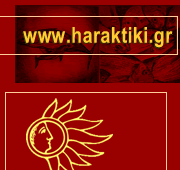As little but as much, we think, that will be heard about the techniques on engraving and imprinting the “paper images” –according to the precise phrasing of Doris Papastratou (1923-1987) about the religious engravings, which she admirably studied, without notably having the possibility to visit Mount Athos- are based on an investigation of the subject, which has been included in the already sold-out book of the author of this text, entitled “Engraving – Graphic Arts. History-Techniques-Methods ( Visual Fine Arts Society Publications “A. Tassos”, Athens 1995).
More recent study outcomes are to be found mainly in publications by monk father Justin Simonopetritis, tireless successor to the recording effort of the orthodox religious engravings from Papastratou: thanks to his very own persistence, the number of the Mount Athos copperplate laboratories was completed and increased to 23, from originally 4 located by Papastratou. Information on the engraving and imprinting technique of the “paper images” we can also derive from the hand-written Interpretation of copperplate art that was invented by father Justin in the Aristotelian University of Salonika (no. 23).
The first “paper images” were imprinted in Greece in the 18th and 19th century from Mount Athos monks, the “stampers” as they were popularly called back at that time. Names mentioned are Parthenios from Elassona (1779-82), Dorotheos (1806), Theodosios Rosos(1807-18), Parthenios Zakynthios (1809-20). Gennadios Iviritis (1810-18), Pavlos Voulgaros (1816), Arsenios Servos (1818), Theofylaktos (1818-32), Agathangelos Triantafilloy (1827-56), that was chronologically the first professor of engraving at the School of Arts in Athens, Daniel (1831-70), Cyril (1832-62), Gerasimos Ydraios (1835), Anthimos Alitzeridis [from Peloponisos] (1836-58), Ignatios Lesvios (1841-53), Averkios (1854-70), Efthimios (1856-59), Haralampos (1862), fellow worker to Averkios, Stefanos (1862-66), Kosmas (1863-64), Anthimos (1866-68), Dionisios (1870-93), Gavriil from Skopelos (1871-87) and Damaskinos Lavriotis (1873).
These monks created copperplate engravings by means of burin and acid (eau-forte) in Karies, center of the Mount Athos engraving art, but also in cells surrounding Protato, at Iviron monastery, in Prodromos hermitage and at the Saint George’s cell of the same monastery, in the hermitage of Profitis Ilias, at Vatopedion monastery and at Hilandariou monastery –in the latter particularly, for some fifteen years now, as well as in the Kalathas cell in Karies, for seven years now, copperplate presses were set up, where the copper plaques that have been rescued in Mount Athos (“bafiloi”) are being imprinted by the assistance of today’s engravers-pressmen.
The copperplate technique using a burin is a special copperplate method, originating from the Renaissance goldsmithery and silversmithery, which however thrived in Europe during the 16th and 17th century. By this method, the pattern is being written from the original (anthivolo), onto a copper plaque of moderate thickness nailed on wood and grinded to a smooth surface. The monk-engraver uses a sharp tool of a triangular profile, the burin (or “veloni”, a needle-like thin burin), so as to engrave the copper material, copying the original that has been placed opposite a mirror. The burin, a tool used by goldsmithers, is made of umbrella spokes and is placed on a wooden handle. The burin lines must be parallel and equidistant. In order to bolden the lines and to create a shadow effect, the monk-engraver may use a thicker burin. If errors are made during engraving, these are corrected by using a mixture of oil and fat, which has been previously warmed.
In the case where the monk-engraver wants to create a small sized picture and thus to finish quickly, or to engrave letters on the copper plaque, a solution of nitric acid (so-called “silverwater” or “strong-water”) is used. In this case the method is called “oxygraphy”. It is known since early 16th century in Spain, when aristocrats used to ornament their swords with impressed decorative patterns and were imprinted by means of nitric acid on the paper so as to control them, oxygraphy is used in a lesser degree in the case of “paper images”. According to this technique, the copper plaque is coated with polish (church candle and alcohol) and after it dries out, the monk-engraver scratches it using thin and small needles (“pountes”) where he wishes to engrave any lines. Afterwards, he immerses the plaque in a solution of nitric acid and this acid erodes the notches and the cavities that have been engraved using the thin needles. The oxidation is being repeated several times, in order to achieve deeper engravings. After this, the plaque is cleansed using turpentine so as to remove the polish and then the monk-engraver corrects, if he wishes, any mistakes by using a burin.
Prior to printing on a special copperplate press, the monk-engraver warms up the copper plaque in a heated sheeting, taking care to ink the engraved lines. Afterwards, he wipes clean the engraved copper plaque and he places it on the press, after putting baize on top of the slightly dampened paper, so as to eliminate the pressure by the press cylinder when rotated. Next, comes the making of the first printer’s proof.
A third, newer technique, that was invented in 1835 by the French designer M.R. Desmodryl and perfectionned a year later in 1836, by printer Berdalle de Lapommeraye. widespread during the 19th century for a draft reproduction of religious engravings, was not necessary to be extensively and frequently used , as far as we can verify, in orthodox paper images in Greece. According to this technique, a combination of copperplate and lithography, the “lithoengraving” or “copper-lithography”, -known in Greece since 19th century, as we can see from creations of Nikolaos Sterogiannis, engraver in the Royal Lithograper’s in Athens (1810-1869) as well as from their references bound in exhibition catalogues and other texts, and that directly refers to graphic arts- the engraving to be printed, which has been treated as a copperplate using a burin or acid, is first printed using oily ink on a lithographic stone, and the stone imprint plays the role of a mould for successive prints that are made lithographically any longer.
Dimitris Pavlopoulos
Art Historian
Dr., Athens University
|



